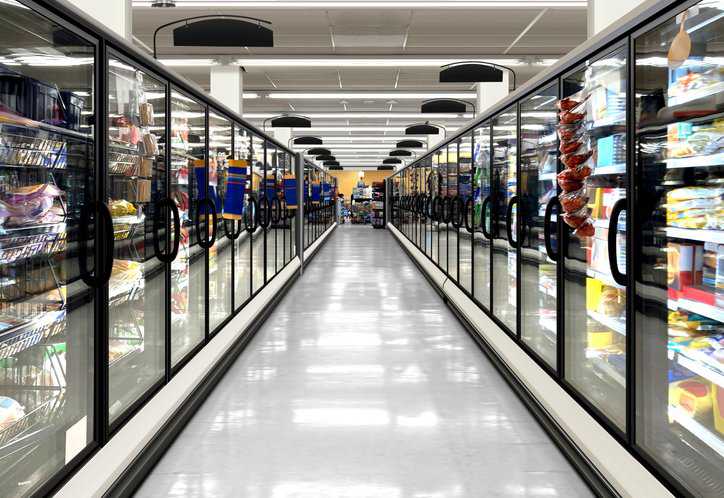NSF/ANSI 7-2023: Commercial Refrigerators And Freezers

The refrigerators of the 1920s were deadly because their motorized compressors easily malfunctioned, allowing the refrigerants (i.e., toxic gases) to escape and sicken or kill families. After hearing about a family that had perished as a result of a previous fridge leaking toxins, Albert Einstein and his colleague Leo Szilard from the University of Berlin created a patent for the refrigerator in 1930. From their cutting-edge research in electromagnetism and thermodynamics, these physicists invented a refrigerator that was hermetically sealed and had no moving parts. Although they were unable to commercialize their invention, the refrigerator still grew in popularity from other inventors in the 1930s and, today, it is an essential part of mankind’s daily life. NSF/ANSI 7-2023: Commercial Refrigerators And Freezers provides requirements for refrigerators and freezers used to store cold food.
What Is NSF/ANSI 7?
NSF/ANSI 7-2023 contains requirements for refrigerators and freezers used to store and/or display cold food. The types of refrigerators and freezers covered by this American National Standard include, but are not limited to:
- Storage refrigerators (e.g., reach-in, under counter, walk-in, roll-in)
- Storage freezers (e.g., reach-in, under counter, walk-in, roll-in)
- Rapid pull-down refrigerators and freezers
- Refrigerated food transport cabinets
- Refrigerated buffet units
- Refrigerated food preparation units
- Display refrigerators
- Beverage coolers
- Ice cream cabinets
The standard establishes minimum food protection and sanitation requirements for the materials, design, manufacture, construction, and performance of commercial refrigerators and freezers and their related components. The requirements in NSF/ANSI 7-2023 are intended to protect food from contamination and ensure that the materials used in the manufacture of refrigerators and freezers resist wear; penetration by vermin; and the effects of foods, cleaning compounds, sanitizers, refrigerants, and other substances that may contact the materials in the intended use environment.
This standard does not establish equipment installation requirements.
Who Invented the Refrigerator?
The concept of mechanical refrigeration began when William Cullen, a Scottish physician, observed that evaporation had a cooling effect in the 1720s. He demonstrated the cooling effect of rapidly evaporating a liquid into gas in 1748 by evaporating ethyl ether in a vacuum.
Moreover, the modern mechanical refrigeration process grew from the work of numerous inventors in the 1800s. American Jacob Perkins, who worked with Oliver Evans, invented the first vapor compression system in 1834, and received a patent for a vapor-compression cycle using liquid ammonia in 1835. John Gorrie, an America doctor, also built a machine similar to Evans’ design in 1842. Gorrie used his refrigerator, which created ice, to cool down patients with yellow fever in a Florida hospital. Gorrie received the first U.S. patent for his method of artificially creating ice in 1851. German scientist Carl von Linde invented a portable compressor refrigeration machine using methyl ether in 1873, and in 1876 switched to ammonia. In 1894, Linde also developed new methods for liquefying large amounts of air.
Commercialization of the Refrigerator
In the late 19th century, refrigerators increased in popularity in industries (namely breweries and meatpacking). While industrial use for refrigerators began in the 19th century, home refrigeration did not become the norm until the 1920s. Surprisingly, home refrigeration has been in use for about a century as it was just in the 1920s-1930s, they started to become mass produced in homes.

Refrigeration for Breweries and Meat
Refrigerator innovations led to widespread commercial refrigeration at the turn of the 20th century for industries like breweries and meatpacking plants. The first refrigerator was installed at a brewery in Brooklyn, New York, in 1870. By the turn of the century, nearly all breweries were equipped with a refrigerator. The meatpacking industry followed with the first refrigerator introduced in Chicago in 1900, and almost 15 years later, nearly all meatpacking plants used refrigerators.
Commercialization of the Home Refrigerator
In 1913, American Fred W. Wolf invented the first home electric refrigerator, which featured a refrigeration unit on top of an icebox. Although the numbers were still quite small, mass production of domestic refrigerators began in 1918 when William C. Durant introduced the first home refrigerator with a self-contained compressor. In the late 1920s, refrigerators started to see increased popularity in private homes; at this time home refrigerators started being sold, but not mass produced.
The first home refrigeration units cost anywhere between $500 and $1,000—the equivalent of over $6,000 to about $13,000 in today’s dollars. As prices started to drop, sales rose from $200,000 in the 1920s to about $6,000,000 by 1935. Although statistics vary, at the beginning of the 1930s only about 8% of American households had a refrigerator; by the end of the decade over 45% had purchased one. This is largely because home refrigeration became even more widespread in the 1930s following the introduction of Freon, a safer alternative to toxic gases previously used in the vapor compression process. Scientists from Frigidaire, General Motors, and DuPont came together to create Freon, which was equally effective at cooling and also would not kill nor harm anyone.
By 1950, 80% of rural American homes and 90% of urban houses had a refrigerator in the kitchen. Today, nearly all homes in the United States — more than 99.8% of American homes own at least one refrigerator that adhere to safety and sanitation specifications such as those in NSF/ANSI 7-2023.
NSF/ANSI 7-2023: Commercial Refrigerators And Freezers is available on the ANSI Webstore.






